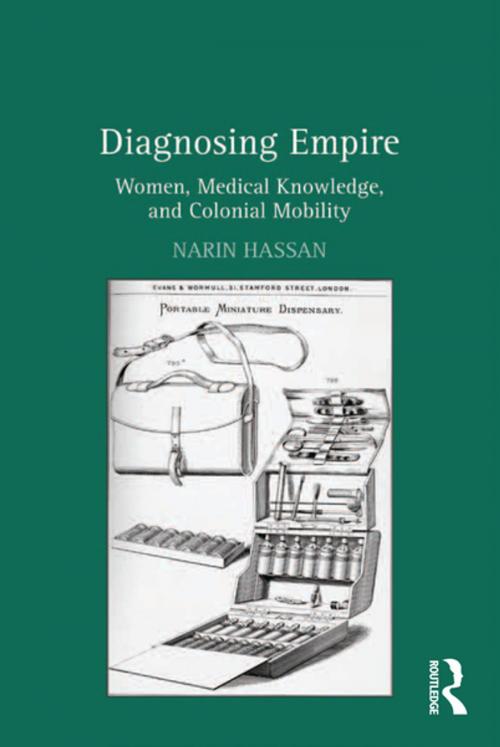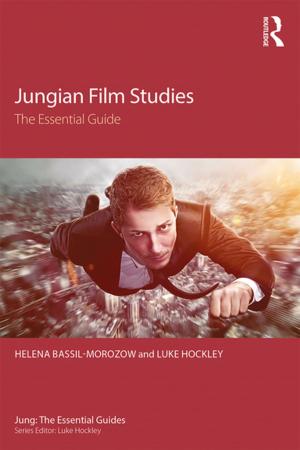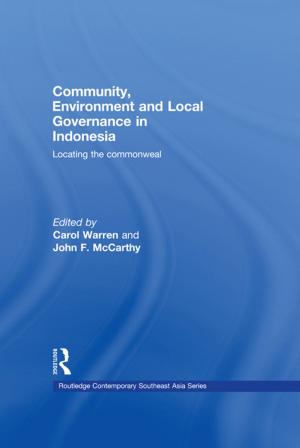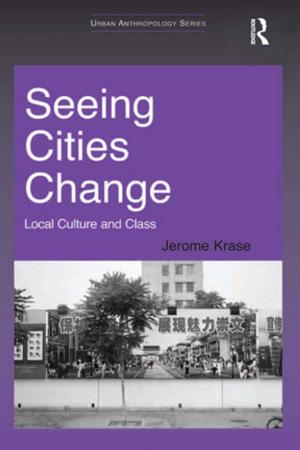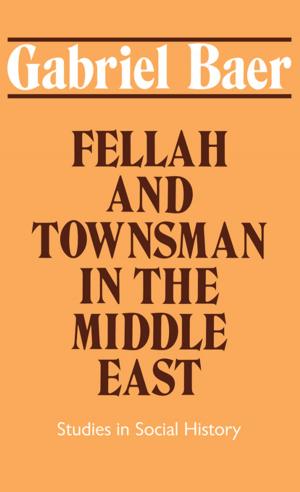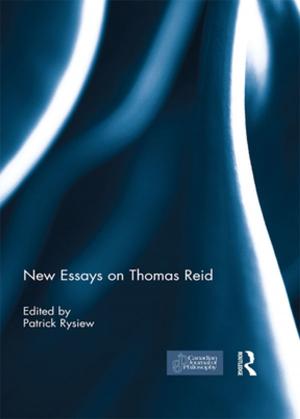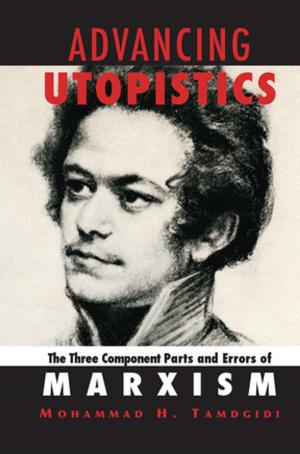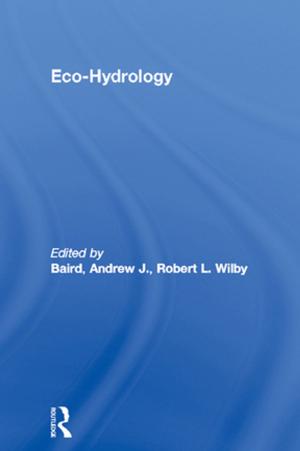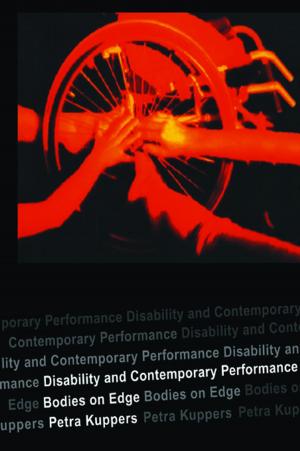Diagnosing Empire
Women, Medical Knowledge, and Colonial Mobility
Nonfiction, Health & Well Being, Medical, Reference, History| Author: | Narin Hassan | ISBN: | 9781317151562 |
| Publisher: | Taylor and Francis | Publication: | April 8, 2016 |
| Imprint: | Routledge | Language: | English |
| Author: | Narin Hassan |
| ISBN: | 9781317151562 |
| Publisher: | Taylor and Francis |
| Publication: | April 8, 2016 |
| Imprint: | Routledge |
| Language: | English |
Examining the emerging figure of the woman doctor and her relationship to empire in Victorian culture, Narin Hassan traces both amateur and professional 'doctoring' by British women travelers in colonial India and the Middle East. Hassan sets the scene by offering examples from Victorian novels that reveal the rise of the woman doctor as a fictional trope. Similarly, medical advice manuals by Victorian doctors aimed at families traveling overseas emphasized how women should maintain and manage healthy bodies in colonial locales. For Lucie Duff Gordon, Isabel Burton, Anna Leonowens, among others, doctoring natives secured them access to their private lives and cultural traditions. Medical texts and travel guides produced by practicing women doctors like Mary Scharlieb illustrate the relationship between medical progress and colonialism. They also helped support women's medical education in Britain and the colonies of India and the Middle East. Colonial subjects themselves produced texts in response to colonial and medical reform, and Hassan shows that a number of "New" Indian women, including Krupabai Satthianadhan, participated actively in the public sphere through their involvement in health reform. In her epilogue, Hassan considers the continuing tradition of women's autobiographical narrative inspired by travel and medical knowledge, showing that in the twentieth- and twenty-first century memoirs of South Asian and Middle Eastern women doctors, the problem of the "Woman Question" as shaped by medical discourses endures.
Examining the emerging figure of the woman doctor and her relationship to empire in Victorian culture, Narin Hassan traces both amateur and professional 'doctoring' by British women travelers in colonial India and the Middle East. Hassan sets the scene by offering examples from Victorian novels that reveal the rise of the woman doctor as a fictional trope. Similarly, medical advice manuals by Victorian doctors aimed at families traveling overseas emphasized how women should maintain and manage healthy bodies in colonial locales. For Lucie Duff Gordon, Isabel Burton, Anna Leonowens, among others, doctoring natives secured them access to their private lives and cultural traditions. Medical texts and travel guides produced by practicing women doctors like Mary Scharlieb illustrate the relationship between medical progress and colonialism. They also helped support women's medical education in Britain and the colonies of India and the Middle East. Colonial subjects themselves produced texts in response to colonial and medical reform, and Hassan shows that a number of "New" Indian women, including Krupabai Satthianadhan, participated actively in the public sphere through their involvement in health reform. In her epilogue, Hassan considers the continuing tradition of women's autobiographical narrative inspired by travel and medical knowledge, showing that in the twentieth- and twenty-first century memoirs of South Asian and Middle Eastern women doctors, the problem of the "Woman Question" as shaped by medical discourses endures.
